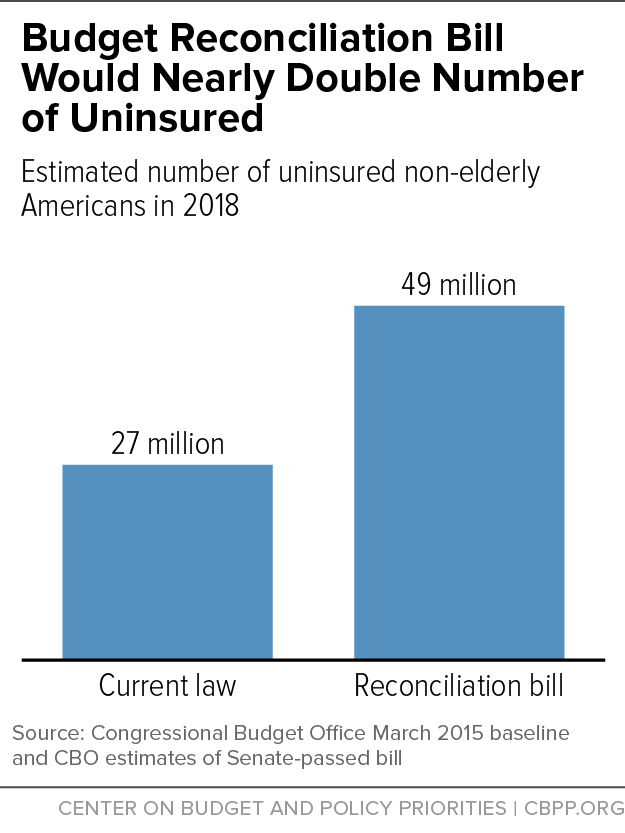BEYOND THE NUMBERS
 The House this week will consider the Senate-passed budget reconciliation bill, which would raise the number of uninsured Americans by at least 22 million starting in 2018, relative to current law, the Congressional Budget Office (CBO) estimates (see chart). Thus, the bill would reverse virtually all (at least 92 percent) of the historic health coverage gains that CBO expects health reform to achieve by 2018.
The House this week will consider the Senate-passed budget reconciliation bill, which would raise the number of uninsured Americans by at least 22 million starting in 2018, relative to current law, the Congressional Budget Office (CBO) estimates (see chart). Thus, the bill would reverse virtually all (at least 92 percent) of the historic health coverage gains that CBO expects health reform to achieve by 2018.
The budget reconciliation bill would, among other things:
- Eliminate health reform’s Medicaid expansion by 2018. That would end health coverage for the millions of low-income individuals who have gained it in the 30 states (plus the District of Columbia) that have expanded Medicaid and prevent the remaining states from expanding it in the future.
- Eliminate the premium and cost-sharing subsidies that help low- and moderate-income people buy coverage through the health insurance marketplaces, starting in 2018. About 86 percent of the 11.7 million individuals who enrolled in marketplace coverage during the open enrollment period for 2015 qualified for financial assistance.
- Effectively repeal health reform’s requirement, known as the individual mandate, that most individuals must have insurance or pay a penalty, by “zeroing out” the penalty amount. Without the mandate, many fewer people would enroll in job-based coverage, individual market coverage, Medicaid, the Children’s Health Insurance Program, or other sources of coverage.
- Effectively repeal the requirement that employers with more than 50 full-time-equivalent employees provide affordable, comprehensive coverage to their workers or pay a penalty. As with the individual mandate, the bill would zero out the penalty. Fewer employers would newly offer coverage to their workers and some employers that now provide it to their employees would drop it or scale it back so that it’s no longer affordable.
The bill leaves in place health reform’s market reforms, including those that bar insurers from denying coverage to people with pre-existing health conditions or charging them higher premiums in the individual market. But without the individual mandate and the subsidies to make coverage more affordable, healthier people would likely drop or otherwise go without coverage. Losing most of the healthy people from the risk pool would substantially push up individual market premiums for everyone else, by making those still enrolled sicker and costlier to cover, on average. Higher premiums, in turn, would push even more healthy people out of the pool over time, driving up premiums still further.
As a result, CBO warns that the overall individual insurance market, particularly in smaller states, could destabilize, “leading to very low to no participation by insurers and consumers.” That would lead to even more uninsured people, on top of the 22 million increase that CBO already projects, relative to current law.

